3D Periodic Table Scaled by Electronegativity
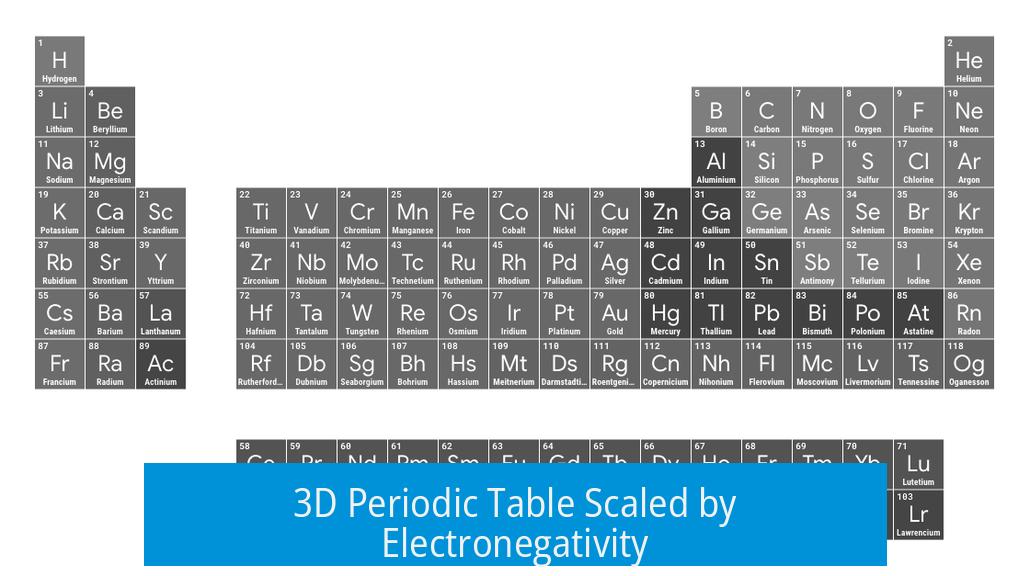
A 3D periodic table scaled by electronegativity is a tangible model where each element’s size or position reflects its electronegativity value. The creator uses 3D printing technology to represent elements as blocks or units. This physical model helps visualize the variation in electronegativity across the periodic table in an intuitive, spatial way.
Creation and Design
The table consists of individual 3D printed blocks for each element. Using a computer model, each element’s block is sized according to its electronegativity value. Higher electronegativity elements, such as fluorine, appear larger or more prominent, while lower electronegativity elements are smaller. The designer uses a distinctive NASA font on the element blocks to improve readability and aesthetic appeal.
Electronegativity Representation Details
- The scaling attempts to reflect true electronegativity values, but perfect visual precision is challenging due to the wide range of values and physical constraints.
- For example, fluorine remains visually prominent as expected for the most electronegative element, but other elements like tungsten may appear closer in size, which can cause confusion.
- Users gain insight into element properties, such as discovering unexpectedly high electronegativity on elements like tungsten, which may not commonly be associated with this trait.
Suggestions for Future Improvements
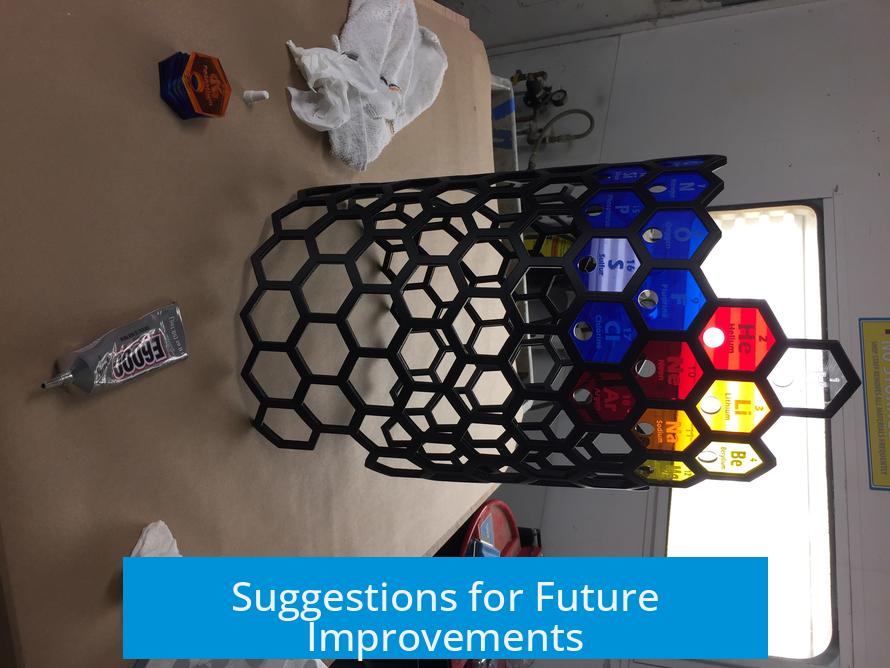
Potential enhancements include expanding the model to cover the full 7th period with accurately sized blocks. Using larger unit cubes for heavier or rare elements could improve both scale and educational value. This expansion would deepen understanding of periodic trends in electronegativity and element classification.
Access and Replication
The creator offers the 3D model files free for download, enabling hobbyists and educators to print the table locally. Material costs vary but remain reasonable for standard 3D printing filaments.
Download the NASA-themed electronegativity periodic table model here.
Key Takeaways
- The 3D periodic table physically represents electronegativity per element via scaled blocks.
- 3D printing enables hands-on visualization and better grasp of element properties.
- Scaling nuances can cause interpretive challenges, especially with elements like tungsten.
- The model is openly shared for public use and improvement.
- Future versions can extend coverage and enhance scale accuracy.
I Made a 3D Periodic Table Scaled by Electronegativity: A Fresh Take on Chemistry’s Classic
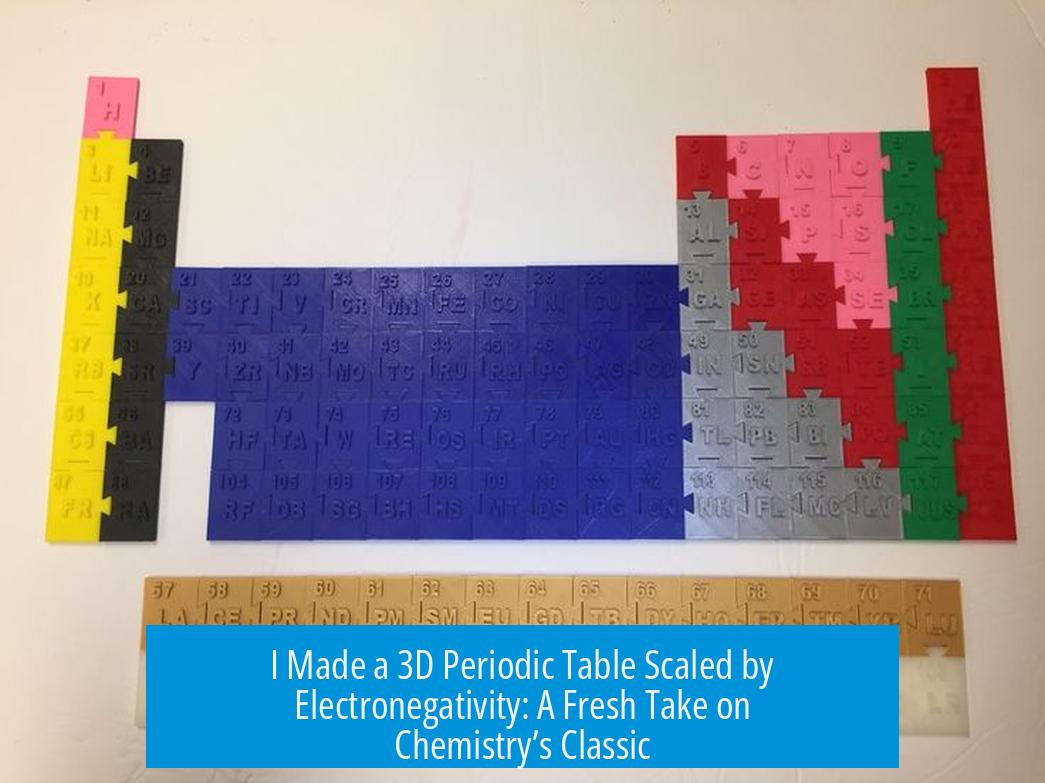
Yes, I created a 3D periodic table that scales each element’s block size based on its electronegativity. Say goodbye to flat grids and hello to a tactile, eye-catching model where chemistry comes to life. It’s like the classic chart got a makeover with a modern twist—and a sprinkle of NASA style.
You’re probably wondering: how exactly does one make such a thing? Let’s dive into the story behind this unique project, the science that shapes it, and why it might just change how you see the elements.
The Creation: Crafting Chemistry in 3D
First off, yes, each block is 3D printed. Imagine a little factory churning out tiny cubes, each one representing an element from hydrogen to oganesson. The secret sauce? The size of each block isn’t random—it’s scaled according to electronegativity values. Fluorine’s cube is smaller and sharper, while elements like tungsten cast a heftier shape.
This method brings the periodic table off the page and into your hands.* Think LEGO for chemists, but with a hint of cosmic flair. Speaking of flair, the NASA font choice adds a futuristic vibe, suggesting this isn’t just school science—it’s a journey into the universe of atoms.
Scaling by Electronegativity: Science Meets Design
Electronegativity describes an atom’s ability to pull electrons toward itself. Fluorine tops the chart with a high electronegativity. So naturally, its block is among the smallest but most electrifying in this 3D model. However, some have pointed out that the scaling isn’t exaggerated enough—fluorine’s block, while smaller, still visibly stands out next to others.
Then there’s tungsten, which caught some viewers off guard. It’s often underestimated for electronegativity, but in this scaling model, tungsten’s block size is surprisingly notable. This challenges common notions and sparks curiosity: “Wait, tungsten has such a high electronegativity? That’s new information!”
In fact, this creative representation invites you to compare blocks side-by-side, making you rethink traditional tables. Is tungsten really similar to fluorine in electronegativity? No—there’s still a clear difference—but in the model’s scale, it appears closer than you might expect. This encourages deeper exploration and learning.
Visual Choices: Why NASA Font?
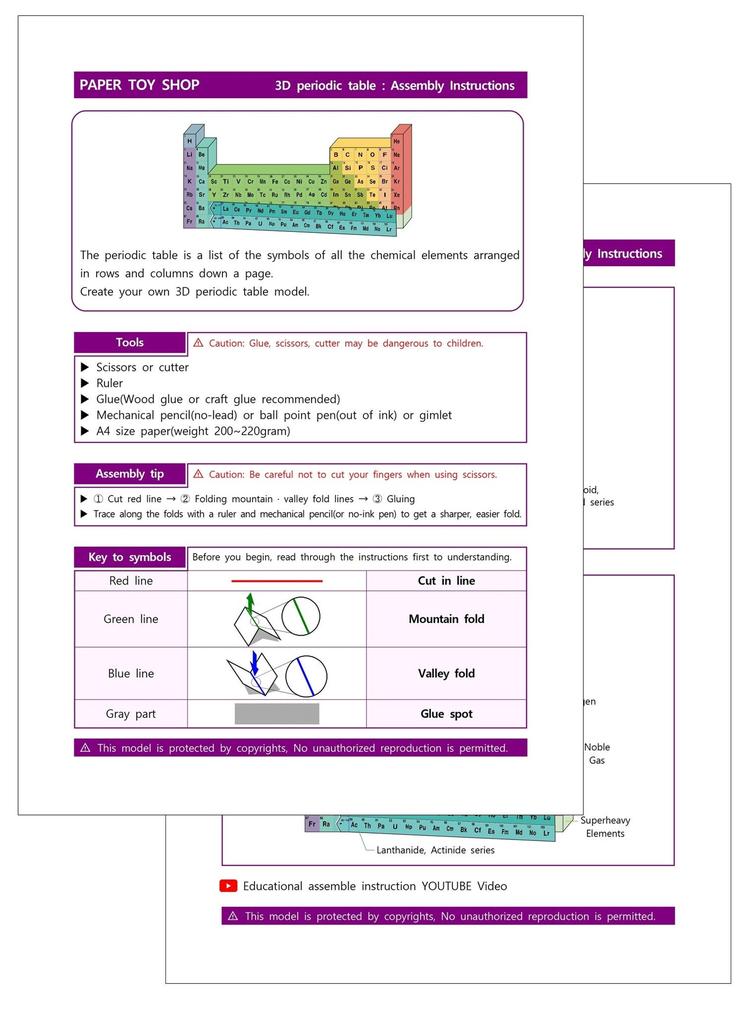
The NASA font was no accident. It injects a touch of space-age wonder into chemical elements. After all, elements aren’t just textbook figures; they’re the building blocks of stars, planets, and everything around us. The font connection hints at this cosmic relationship and makes the periodic table feel like a tech-savvy science artifact.
Would the model still feel as special with a standard font? Possibly not. This design choice invites you to handle the table with the same awe you’d have for a spacecraft schematic. It’s all part of the experience.
What’s Next: Expanding the Universe of 3D Elements
One exciting suggestion circulating is to build out the 7th period of the table using 1-liter blocks corresponding to the actual scale or properties of those elements. Imagine giant cubes representing radioactive or synthetic elements towering over your desk! This would not only enhance educational value but transform it into a striking art installation.
Could this be a future project? Absolutely. It’s a natural next step for anyone obsessed with merging science and design to create tactile, interactive learning tools.
Access, Cost, and DIY Chemistry Fun
Now, about practicality: how expensive is a project like this? Material costs depend on the printing method and materials used. The original creator assures it’s affordable, especially since the 3D printing files are available for free download! Yes, that link to download the NASA-themed electronegativity periodic table lets you print the model yourself or locally—with zero licensing fees.
This opens a wonderful door for educators, students, and chemistry fans alike. Instead of just memorizing electronegativity trends, you can literally hold, compare, and experience them. Local libraries, maker spaces, or home 3D printers can turn this file into a tangible tool for hands-on learning or even conversation starters.
Why Does This Matter? The Benefits of a 3D Electronegativity Table
- Enhanced Understanding: Scaling makes differences in element behavior visible at a glance.
- Interactive Learning: Hands-on engagement with physical objects helps retention and curiosity.
- Visual Impact: The 3D form and NASA design elevate the periodic table from wall chart to art piece.
- Customization: Free files let users add or modify elements, create new scales, or expand the table.
Could this approach replace traditional tables? Probably not entirely. But it offers a fresh educational pathway for those itching to go beyond passive study.
Final Thoughts: A Game-Changer for Science Buffs and Educators
This 3D periodic table isn’t just a science project—it’s a conversation starter, a teaching aid, and a nerdy décor item all rolled into one. By scaling each element by electronegativity, it invites observers to rethink atomic properties in a tactile, memorable way.
Curious which element block really stole the show for you? Why not download the model, print your own, and find out firsthand? Whether you’re a teacher looking to spice up lessons, a chemistry student, or just a curious brain, this model brings out the joy of discovery hidden in the elements’ electric personalities.
Ready to see the periodic table from a fresh angle? Sometimes the smallest cube packs the biggest punch.
How is electronegativity represented in the 3D periodic table?
The size of each element’s block is scaled according to its electronegativity value. Higher electronegativity means a bigger block, giving a visual comparison across the table.
Are the blocks actually 3D printed for this model?
Yes, each block is 3D printed individually. This allows for precise dimension scaling and customization based on electronegativity values.
Can I access or print this 3D periodic table myself?
The entire model is freely available to download online. You can print it locally using the provided files, reducing cost and making it easy to replicate.
Does the model include all elements with accurate electronegativity scaling?
The scaling shows clear differences but may not perfectly capture subtle variations. Some elements like fluorine remain visually prominent but might need finer scaling adjustments.
Is there a plan to extend the model with more periods or different designs?
Yes, future improvements include building the 7th period with larger blocks representing actual element sizes, enhancing both accuracy and visual impact.


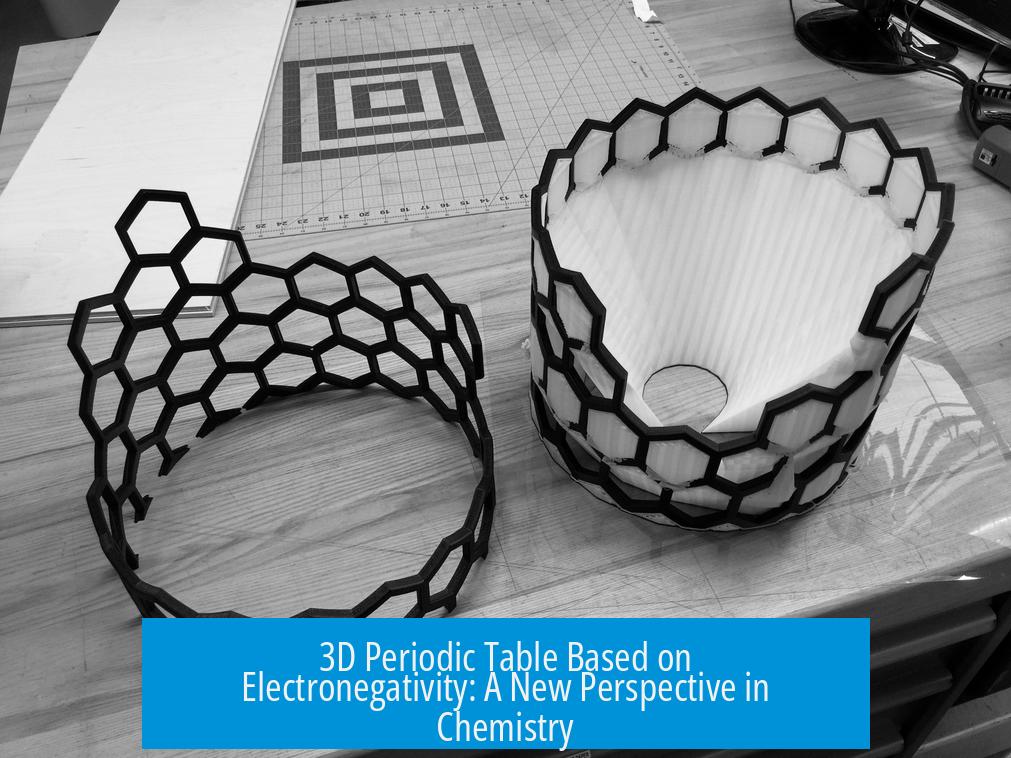
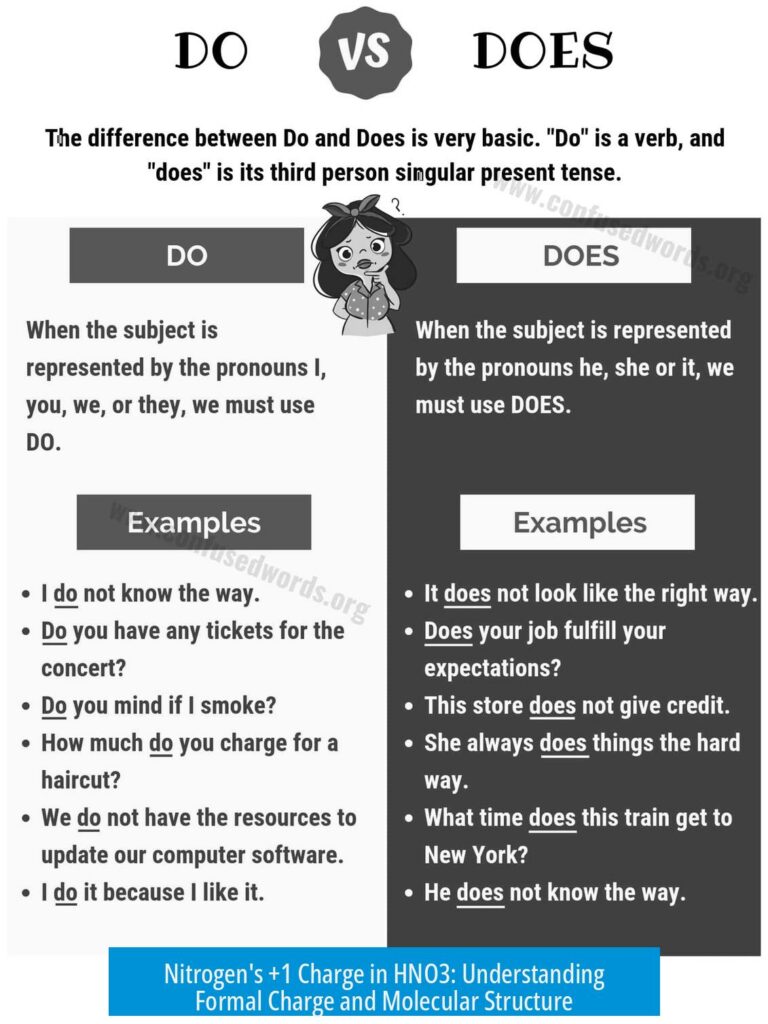
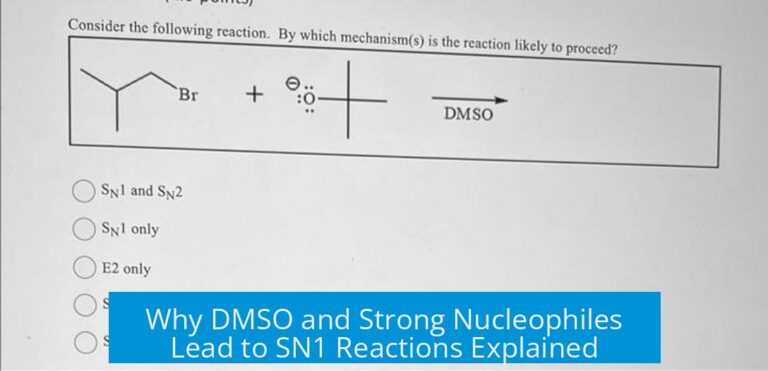
Leave a Comment